Framing batik art is a vital aspect of preserving its beauty and cultural significance while showcasing it as a stunning piece of decor or artwork. Batik art, a captivating form of traditional textile art, has a rich cultural heritage dating back centuries.
Originating from various regions around the world, batik is renowned for its intricate designs and vibrant colors achieved through a meticulous wax-resist dyeing technique.
The process of framing batik involves careful consideration of materials, such as selecting appropriate frames, matting options, and glazing choices to protect the delicate fabric. Each step is essential to ensure the longevity and visual appeal of the batik masterpiece.
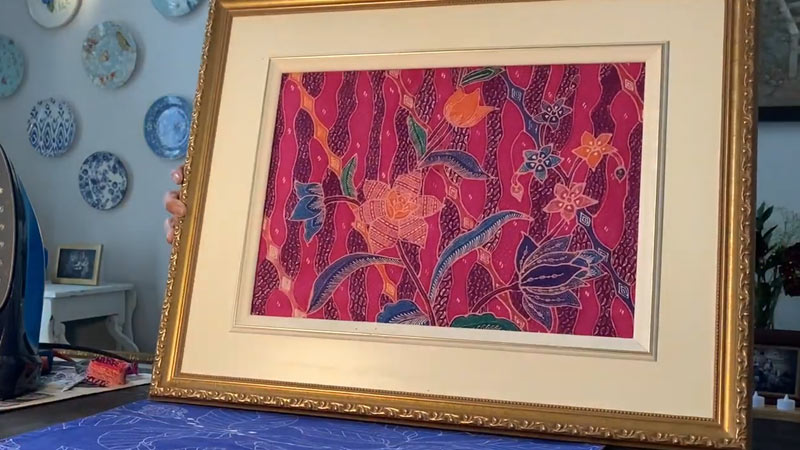
Materials Needed for Framing Batik Art
To frame batik art effectively and preserve its beauty, you will need the following materials:
- Batik Art Piece: The primary material needed for traditional framing is the batik art piece itself. Whether it’s a delicate batik fabric or a batik painting on paper or canvas, the artwork serves as the centerpiece of the framing process.
- Acid-Free Mat Board: An acid-free mat board is an essential component of framing batik art. The mat board not only enhances the presentation of the artwork but also acts as a protective barrier between the art and the glazing.
- Glass or Acrylic Glazing: To safeguard the batik artwork from dust, dirt, and moisture, glass or acrylic glazing is used. Both materials provide transparency, allowing the intricate patterns and colors of the batik to be visible.
- Frame of Choice: The frame serves as the outer border and support for the entire framed piece. Choose a frame that complements the style and aesthetics of the batik art while providing adequate support.
- Mounting Tape or Acid-Free Corners: Mounting tape or acid-free corners are used to attach the batik art to the mat board without causing any damage to the artwork.
- Archival Backing Board: An archival backing board is placed behind the batik artwork, providing additional support and preventing any damage to the backside of the artwork.
Step by Step Guide on How to Frame Batik Art
Framing batik art requires attention to detail and careful handling to protect and showcase the beauty of this unique and culturally rich form of artwork. A well-chosen frame, proper matting, glazing, and thoughtful display will not only enhance the visual appeal of the batik but also ensure its longevity for years to come.
Here is a step by step guide on how to frame batik art:
Ironing
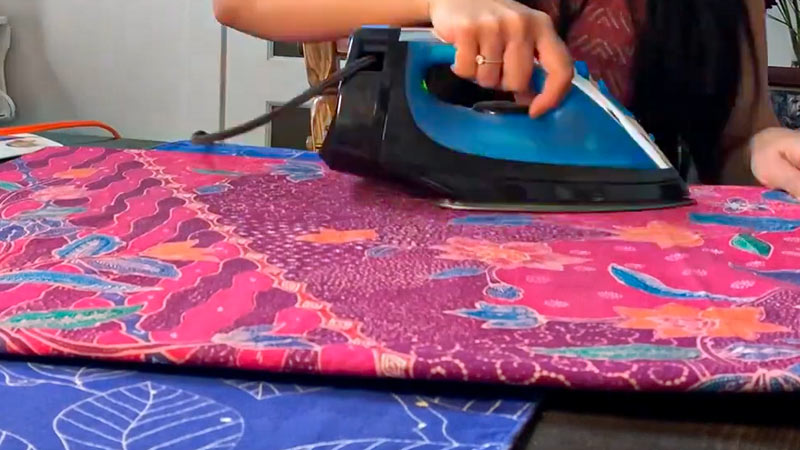
In the process of creating batik art, ironing plays a crucial step in achieving a smooth and vibrant final product. After the wax has been applied to the fabric to create the desired patterns and designs, the next step involves removing excess wax and setting the colors through ironing.
Before ironing, the batik artwork is placed between layers of newsprint or plain white paper to absorb any excess wax. The layers of paper help protect the iron and ironing board from getting stained with wax. The iron is then heated to a moderate temperature, typically suitable for the specific fabric used.
Careful attention is required during ironing to ensure that the iron moves gently and smoothly over the entire surface of the batik fabric. This process not only removes any remaining wax but also helps the fabric absorb the dyes more effectively, enhancing the brilliance and permanence of the colors.
Matting
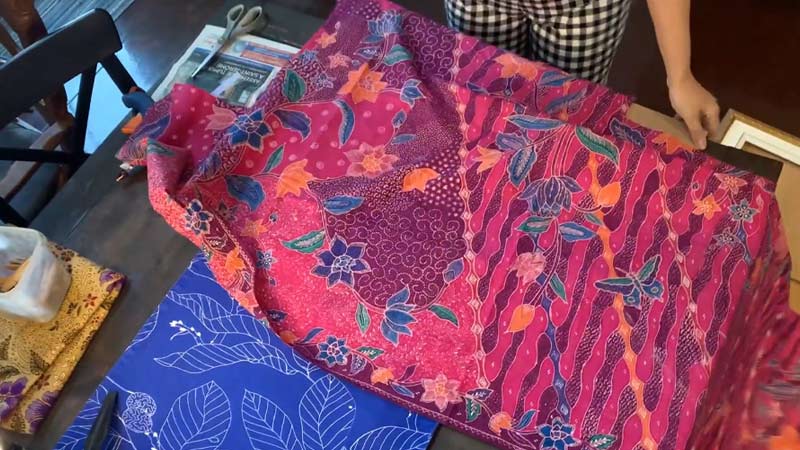
Matting is an important step in framing batik art. It involves placing a mat (a cardboard or paperboard material) around the batik fabric to create a border between the artwork and the frame.
The mat serves several purposes, including providing a visual separation between the artwork and the frame, protecting the batik from direct contact with the glazing, and preventing the fabric from touching the glass surface, which can lead to moisture buildup or sticking.
Choose a mat color that complements the colors in the batik and the overall aesthetic you want to achieve.
Framing
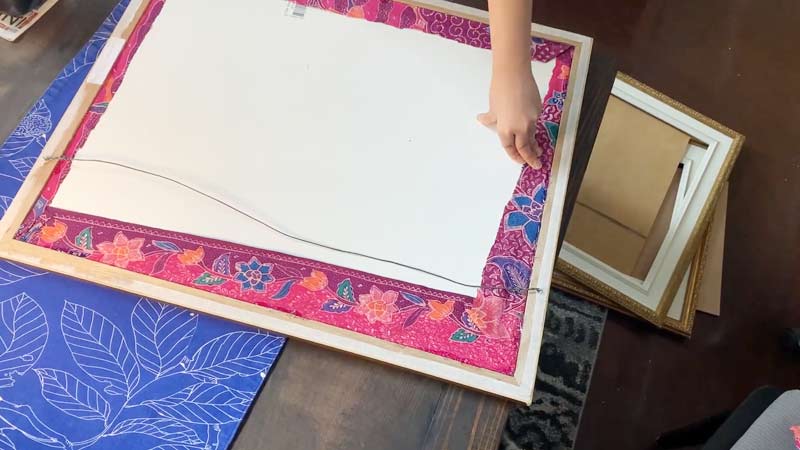
Selecting an appropriate frame is crucial for showcasing and preserving the batik art. Wooden or metal frames are popular choices for framing batik fabrics. The frame should be deep enough to accommodate the thickness of the batik fabric, the matting, and the glazing.
Ensure the frame is sturdy and well-constructed to support the weight of the artwork. Additionally, consider the style and color of the frame, keeping in mind how it will enhance the overall presentation of the batik.
Glazing
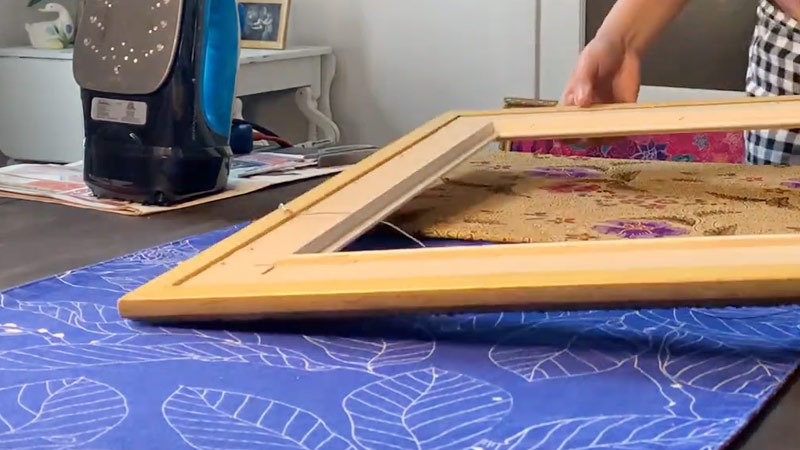
Glazing refers to the transparent covering used to protect the batik art from dust, dirt, and moisture. While glazing is not always necessary for batik art, it is recommended to provide added protection and preserve the fabric over time.
Common glazing options include glass and acrylic (plexiglass). Both materials offer clarity and UV protection. Acrylic is lighter and shatter-resistant, making it a safer option for large or heavy batik artworks.
Finishing Touches
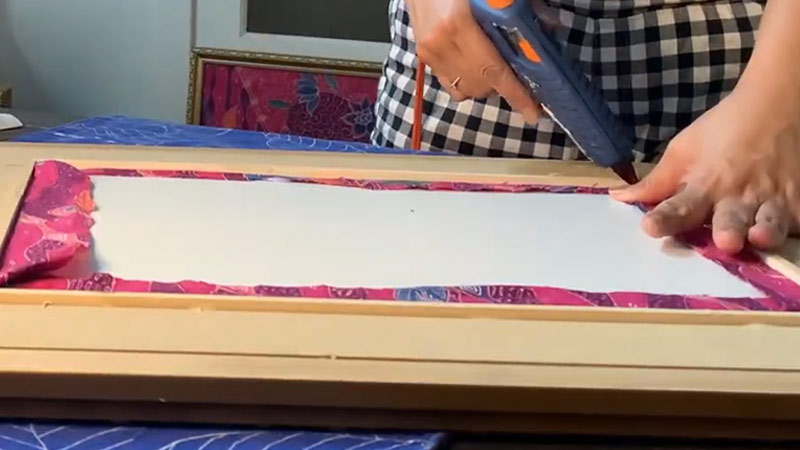
Before securing the batik fabric in the frame, make sure it is clean and free from any debris or loose threads. Handle the artwork with care to avoid smudging the wax or damaging the delicate fabric.
If needed, iron the batik on low heat with a protective cloth between the iron and the fabric to remove any wrinkles. Once the batik is ready, carefully position it within the matting and frame.
Display and Preservation
When displaying framed batik art, choose an appropriate location that avoids direct sunlight, as prolonged exposure to UV rays can cause fading and deterioration of the fabric. Keep the artwork away from areas with high humidity or extreme temperature fluctuations, as these conditions can affect the integrity of the batik.
Regularly inspect the framed art for any signs of damage or deterioration, and take appropriate measures to preserve its condition, such as dusting the frame and glazing and ensuring the frame is secure on the wall.
Tips on Hanging Batik Art Frame
Hanging batik art frames requires a delicate approach to preserve the artwork’s beauty and ensure its longevity.
Here are some tips to help you hang your batik art frame with care:
Use the Right Screws and Nail
When framing batik art, it is crucial to use the right nails or screws to securely hold the frame in place. Choose nails or screws that are appropriate for the type of wall you have. For drywall, use wall anchors or picture hangers designed to hold the weight of the frame. For concrete or brick walls, consider using wall plugs or masonry screws. Using the correct hardware will ensure that your batik art remains safely and beautifully displayed.
Keep Enough Space Between Frame and Ceiling
To create an aesthetically pleasing display, leave some space between the top of the framed batik art and the ceiling. This spacing will depend on the size of the artwork and the height of the ceiling. Typically, leaving about 4-6 inches of space will give the artwork room to breathe and prevent it from feeling cramped or crowded within the room.
Must Use Appropriate Hardwares
The type of hardware used to hang the framed batik art is essential for its stability and longevity. Use picture hanging wire or D-rings with appropriate weight ratings to hang the frame evenly. It is crucial to distribute the weight evenly to avoid putting unnecessary strain on specific parts of the frame. Additionally, consider using rubber bumpers on the bottom corners of the frame to prevent it from shifting or scratching the wall.
Keep Away from Moisture and Direct Sunlight
Batik art is typically created using fabric and dyes, making it susceptible to damage from moisture and direct sunlight. When choosing a location to hang your framed batik art, avoid areas with high humidity, such as bathrooms or kitchens. Similarly, keep it away from windows where direct sunlight could fade the vibrant colors and weaken the fabric over time. Instead, opt for a spot that is dry and receives diffused or ambient light.
FAQs
Can I frame batik art without using glazing?
Yes, you can frame batik art without using glazing if you prefer to display the fabric in its raw, unobstructed form. However, keep in mind that glazing offers protection against dust, dirt, and moisture, which can help preserve the artwork over time.
Should I frame batik art behind glass or acrylic (plexiglass)?
Both glass and acrylic (plexiglass) are suitable options for framing batik art. Glass provides excellent clarity and UV protection, but it can be heavier and more prone to breakage. On the other hand, acrylic is lighter, shatter-resistant, and offers UV protection as well.
Can I frame batik art with a floating frame style?
Yes, a floating frame style can be a visually striking way to showcase batik art. In a floating frame, the artwork appears to be suspended within the frame without a mat or border covering the edges. This style allows the unique edges and patterns of the batik fabric to be fully visible.
How do I clean a framed batik artwork?
To clean a framed batik artwork, first, remove the artwork from the frame, if possible. Use a soft, dry, lint-free cloth to gently wipe away any dust or debris from the surface of the fabric. Avoid using water or cleaning solutions, as they can damage the delicate batik. If the frame has glass or acrylic, clean it using a mild glass cleaner and a soft cloth.
Can I reframe an old batik artwork to update its appearance?
Yes, reframing an old batik artwork can give it a fresh and updated look. When reframing, ensure that the new frame complements the style and colors of the batik. Consider rematting the artwork if necessary, and choose a frame that enhances the overall presentation while providing proper support and protection for the fabric.
To Recap
Framing batik art is a thoughtful and essential process that not only protects these captivating textiles but also elevates them into cherished works of art. The careful selection of frames, matting, and glazing allows the unique patterns and colors of batik to shine while safeguarding it from potential damage.
Whether displayed as a cultural treasure or a decorative piece, a well-framed batik artwork adds an artistic and culturally rich touch to any space. By following the proper techniques and handling it with care, we can ensure that batik art continues to captivate and inspire viewers for generations to come, preserving the beauty of this time-honored textile tradition.
Leave a Reply